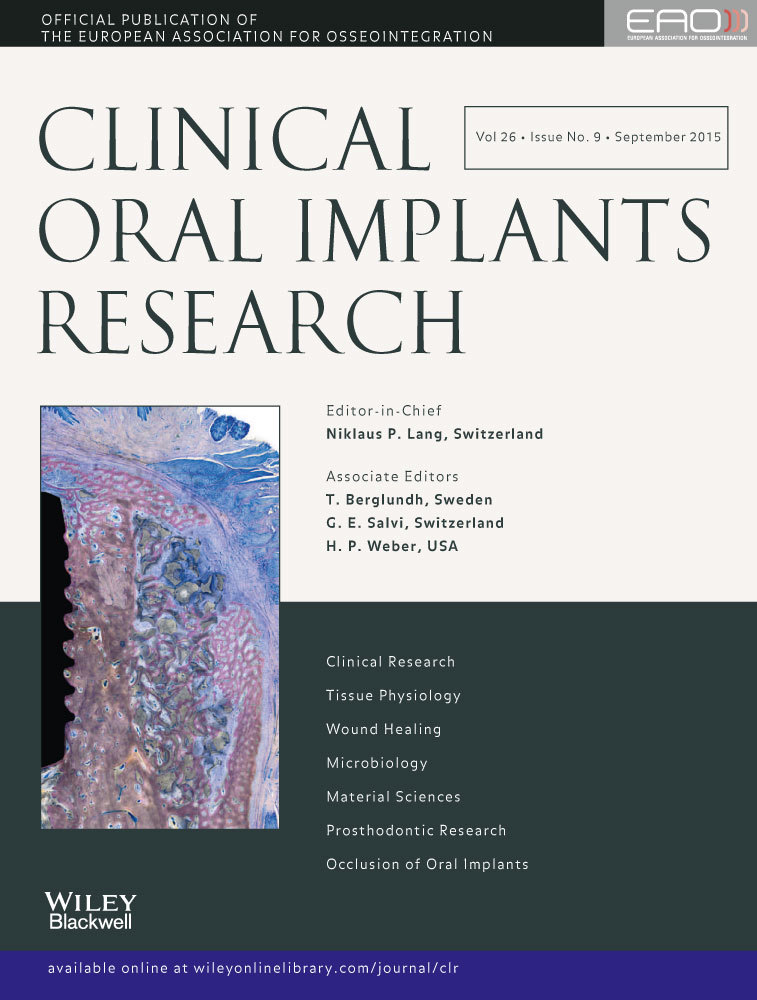Unsplinted implants and teeth supporting maxillary removable partial dentures retained by telescopic crowns: a retrospective study with >6 years of follow-up
Abstract
Objectives
Data regarding tooth- and implant-supported maxillary removable partial dentures (TIRPDs) are scarce. The objective of this research was to perform a retrospective evaluation of the clinical long-term outcome of maxillary TIRPDs rigidly retained via telescopic crowns in patients undergoing supportive post-implant therapy (SIT).
Material and Methods
The inclusion criteria were met by 26 patients restored with maxillary TIRPDs between 1997 and 2011 in a private practice. Primary crowns (Marburg double crowns, MDCs) on teeth were cemented, whereas those on implants were screw-retained. Using patient records and data from a cross-sectional clinical examination in 2013, the survival rates of the teeth, implants and prostheses, together with the biological and technical complications, were analyzed.
Results
After 6.12 ± 3.80 (range: 2−16) years of loading, 23 non-smoking patients with 23 dentures supported by 60 implants and 66 teeth were available for assessment. Nine teeth (survival rate: 86.36%) were lost, whereas 1 implant (survival rate: 98.36%) failed because of peri-implantitis. Although 30 implants (50%) in 16 patients (69.57%) showed bleeding on probing (BOP+), no further peri-implantitis was observed. The mean peri-implant probing depth (PPD) was 3.68 ± 0.71 mm. All dentures were functional and required technical maintenance efforts amounting to 0.128 treatments per patient per year (T/P/Y).
Conclusions
Within the limitations of this study, we conclude that TIRPDs retained via MDCs may represent a viable treatment option for patients with residual maxillary teeth.




